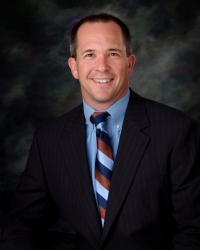You are invited to join us:
When: Sunday, September 8th, 2013: 12:30 – 3:00.
What: Antheil Maslow & MacMinn's Annual Client Appreciation BBQ.
Where: AMM's Doylestown Office, 131 West State St. Doylestown.
We hope you’ll join us for some great food and refreshments and enjoy a fun afternoon in the heart of Doylestown! This event includes a BBQ lunch and a front row seat to the Doylestown Arts Festival and Bike Race. All of our clients and friends are welcome.
Antheil Maslow & MacMinn congratulates the Bucks County Children's Museum, which was honored with the Community Recognition Award from the Village Improvement Association at their annual meeting on June 4th. The Bucks County Children’s Museum’s mission is to be a fun, interactive and educational environment for children, parents and schools with exhibits that reflect Bucks County's unique history and culture. The Children's Museum is located at 500 Union Square in New Hope.
Scope Of “Work Product” Expert Discovery To Be Considered
Written by Thomas P. DonnellyReprinted with permission from April 5, 2013 issue of The Legal Intelligencer. (c)
2013 ALM Media Properties.
Further duplication without permission is prohibited.
The Pennsylvania Supreme Court is set to hear argument on April 10, 2013 regarding the scope of the work product doctrine and the discovery of materials contained in a testifying expert’s file on April 10, 2013. The specific issue on appeal is whether Pennsylvania Rule of Civil Procedure 4003.3 provides absolute work product protection for all communications between a party’s counsel and its testifying trial expert. The decision may provide clarity and guidance to litigation counsel facing an otherwise clouded issue.
In Barrick v. Holy Spirit Hospital, 32 A. 3d. 800 (Pa. Super. 2011), the trial court was faced with a subpoena directed to a medical provider who was both a treating physician and an expert retained for the purpose of offering trial testimony. The trial court, after an in camera inspection, ordered the enforcement of the subpoena and the disclosure of communications between the expert and the Plaintiff’s counsel. Plaintiff appealed, arguing the application of the work product doctrine under Pennsylvania Rule of Civil Procedure 4003.3 and trial preparation materials under Rule 4003.5 protected the communications from disclosure.
Antheil Maslow & MacMinn is pleased to welcome Michael W. Mills as a Partner to the Firm, joining AMM’s Tax, Business & Finance and Estates & Trusts Practice Groups. Mike’s practice focuses primarily on helping privately-owned businesses preserve value, and helping individuals preserve and protect their family wealth. Mike’s experience includes not only private law practice, but also public accounting as well as financial services, and Mike holds both a Certified Public Accountant and Certified Financial Planner™ designation. This broad range of experience allows Mike to bring unique perspective and value to the firm’s business and individual clients.
A great deal of Mike’s time is spent working with family businesses, helping to preserve and protect their value. This very often includes a focus on management and ownership succession issues, and associated personal estate planning for family business owners.
Mike has been active in the local community and professional organizations. He has served on a number of nonprofit boards in the Central Bucks community, and served as President of the Bucks County Estate Planning Council in 2008-2009.
Partner
215-230-7500, ext. 116
mmills@ammlaw.com
Practice Groups:
Education:
- New York University School of Law, LL.M., Taxation, 1993
- Rutgers University School of Law, J.D.,1992; Tax Honors Certificate with Distinction,1992; Editor Rutgers Law Journal
- Lehigh University, B.S., 1989
Bar Admissions:
- Pennsylvania, New Jersey and U.S. Tax Court
Sue Maslow will present a program offering 1 substantive CLE credit for attorneys on Wednesday, April 3rd at 8:30 - 9:30 a.m. at the Bucks County Bar Association in Doylestown. In this intermediate level seminar, Sue will discuss best practices in nonprofit governance, policy and disclosure to satisfy fiduciary obligation under PA law and maintain Federal tax-exempt status. Fact patterns that can be deemed self dealing, private benefit or private inurement and IRS imposed itermediate sanctions and excise taxes often triggered will be reviewed to highlight challenges faced by nonprofit board members and trustees. The program is sponsored by the Business Law Section of the Bucks County Bar Association.
Adopting a Form for Your Socially Responsible For Profit Enterprise
Written by Susan MaslowMy heart inevitably sinks when a client asks the ever popular question “What form of legal entity would be best for my for-profit enterprise?” The entrepreneur’s excitement is contagious but answering is never easy. There are so many variables that determine where a start-up might end up no matter how researched the assumptions and projections might be. And yet, a choice has to be made.
For the growing number of social entrepreneurs, it has become even more nuanced. There are three new legal forms emerging to satisfy the “Impact Investment Revolution” in our midst (the Flexible Purpose Corporation, the Benefit Corporation and the Low-Profit Limited Liability Company or L3C), and Illinois is considering the creation of a fourth, the Benefit L3C. While each is designed to accommodate ventures that pursue social and environmental benefits attractive to impact investors, social entrepreneurs should consider a variety of factors before using the traditional LLC or corporation.
Summarizing the similarities and differences of each of the new legal forms is no straightforward task. Each state that has adopted one or more of the alternative new forms has slightly different requirements and there is no real case law to date analyzing how state specific legislation is to be interpreted since these legal forms are so new.
In general, the Flexible Purpose Corporation permits the founders of a for profit corporation to establish a blend of business and charitable or social objectives that are not profit maximization or asset growth oriented. The board and management of the Flexible Purpose Corporation are then charged to act with those blended objectives in mind and to report to the shareholders on its success or failure in achieving them.
The Benefit Corporation differs slightly in that it is a for profit entity that is required to advance a general public benefit in addition to any other purposes adopted as a business corporation. The Benefit Corporation may also have as a purpose the creation of one or more specific public benefits. The directors have an affirmative duty to consider the effects of their decisions on all of the corporation’s constituencies (shareholders, customers, suppliers, the environment, the community) and an annual benefit report prepared by an independent third party describing efforts to create the public benefit during the preceding year must be filed with the Department of State and distributed to shareholders.
In contrast, an L3C is usually formed to create a presumption of eligibility for program related investments (PRIs) from one or more foundations or to lock in a charitable mission when the founders have a set of investors who will support that mission. See my earlier post “Private Foundations and New Regulations Regarding Program-Related Investments”. The L3C is, by definition, a low-profit limited liability company which significantly furthers the accomplishment of one or more charitable or educational purposes within the meaning of Section 170(c)(2)(B) of the IRS Code of 1986, as amended. No significant purpose of the L3C can be the production of income, the appreciation of property or one or more political or legislative agendum within the meaning of Section 170(c)(2)(D) of the IRS Code of 1986, as amended.
The L3C therefore goes further than the Flexible Purpose Corporation or the Benefit Corporation in that both of those are set up to be money-making enterprises that also have social or charitable mission(s). The L3C can operate a business but producing income or maximizing appreciation of assets cannot be a significant purpose of the venture and if it becomes clear after formation that income or appreciation is the focus, the L3C will immediately cease to exist as a low-profit LLC although it will continue to exist as a limited liability company.
Note that “B Corporations” are not a corporate form but rather a certification mark available to all three of the above forms and even traditional for profit corporations. The certification or brand can be obtained from the nonprofit organization called B Lab and requires achieving a specific score after the B Lab evaluation of a variety of factors including the entity’s treatment of its employees and successful evaluation of socially responsible goals. See http://www.bcorporation.net for more information on B corporations.
With the above in mind, reverting to the age old “Who”, “What”, “Where”, “When” and “Why” analysis is probably the best way to analyze the alternatives. Throwing in a “How” or two will help even more.
Looking at the “who”, entrepreneurs, investors and consumers each have characteristics that may make one choice unavailable or at least inappropriate. For example, if the founding principals consist of one or more non-profit corporations rather than individuals, a Benefit Corporation may be desired although such an entity would be unable to elect pass through “S” status which may prompt a closer examination of the L3C model. If attracting foundation PRIs is a large part of the business plan, that too might suggest that the L3C is the proper vehicle. In contrast, if the initial or anticipated future investors articulate the desire to consistently build profits along with a material positive impact on society or the environment, the L3C requirement for “low-profit” expectations will be violated and the L3C status possibly challenged. The Benefit Corporation would be a better choice for such investors especially where enough time has simply not elapsed for anyone to determine how low the “low profit” requirement really is.
The “what” and the “where” is a close examination of the intended business activities and cross border implications, if any. Some activities are more fundamentally socially or environmentally beneficial than others and some are clearly charitable at their core. At the same time, while you can form a legal entity anywhere that the chosen structure is permitted and file for authority to do business in any state of operation, PRIs, bonds and grant programs are often geographically specific.
“When” is a determination of the planned exit of either the founders or specific staged investors which may suggest starting out as one kind of entity and evolving over time into another kind of entity which is permitted in most states if the requisite shareholder/member consent is obtained. The transition is not intended to be as difficult as a non-profit to for profit transformation (which, in Pennsylvania, require Attorney General and Orphans’ Court participation). “Why” is really another examination of the social/environmental/charitable mission and the expectations of all principals along with the individuals or programs the principals intend to benefit with the new endeavor. And, finally, an old fashioned projection of just “how” much money is needed at different junctures of the anticipated growth cycle is key.
LawForChange at http://www.lawforchange.org features some interesting content on the variety of legal structures available on a state by state basis. There are certainly pros and cons of using each structure and I sincerely wish you well in your efforts to choose which will be best. Forget what I said at the beginning of this post and feel free to call me if I can be of any help.
Why does it seem to take so long to solve simple problems? For years litigators have had to resort to the use of the cumbersome and needlessly expensive procedures to compel the attendance of a witness in interstate litigation pending in state court. The problem arises, of course, where the testimony of a witness located in Pennsylvania is needed in connection with litigation pending in another state, or when the witness is located out of state and his testimony is needed in connection with a Pennsylvania case.
In 2007, the National Conference of Commissioners on Uniform State Laws promulgated the Interstate Depositions and Discovery Act (the “Act”) which simplified the entire process. In October 2012 the Act was adopted in Pennsylvania and became effective December 24. It is codified at 42 Pa.C.S. § 5331.
The Act requires the Prothonotary to issue a Pennsylvania subpoena, upon the submission of a foreign subpoena. The Pennsylvania subpoena must incorporate the terms used in the foreign subpoena and provide the names and contact information for all counsel of record and unrepresented parties in the foreign proceeding. Service and enforcement of the subpoena are governed by the Pennsylvania Rules of Civil Procedure.
Need to subpoena a witness in another state for a Pennsylvania case? If the witness is located in any of the thirty two states and territories that have adopted the Act, the procedure is just as simple. Issue a Pennsylvania subpoena; send it to your local counsel on the ground in the discovery state and off you go. The Act is the law in Alabama, Arizona, California, Colorado, Delaware, District of Columbia, Georgia, Hawaii, Idaho, Indiana, Iowa, Kansas, Kentucky, Maryland, Michigan, Mississippi, Montana, Nevada, New Mexico, New York, North Carolina, North Dakota, Oregon, Pennsylvania, South Carolina, South Dakota, Tennessee, U.S. Virgin Islands, Utah, Vermont, Virginia, Washington. It is on the legislative agenda in New Jersey.
That’s all there is to it! In the words of the Commission:
The Act requires minimal judicial oversight and eliminates the need for obtaining a commission or local counsel in the discovery state, letters rogatory, or the filing of a miscellaneous action during the discovery phase of litigation. Discovery authorized by the subpoena is to comply with the rules of state in which it occurs. Furthermore, motions to quash, enforce, or modify a subpoena issued pursuant to the Act shall be brought in and governed by the rules the discovery state.
The solution is so simple one wonders why it took so long to come up with it and, once the Act became available, why it took five years to enact it in Pennsylvania? Enact it we have and litigators, their clients and the Courts will benefit from its simplicity.
Antheil Maslow & MacMinn is very proud to support the Buck Up for Bucks County Fundraising campaign. The firm and its employees individually have donated to the the Bucks County Homeless Shelter's fundraising campaign to build a new kitchen at the Emergency Shelter, and we are issuing a social media challenge to all of our connections in Bucks County to join us in supporting this worthy cause.
To learn more about the shelter and how you can help, click here
Moving any piece of civil litigation through the court system is an important aspect of service to the client. Efficiency in advocacy is critical to representation. A litigator must be aware of the local landscape and use that backdrop to the client’s advantage where possible. Knowing when action is required or not required, ascertaining deadlines and effectively communicating with court administration and staff enhances the representation of the client. Moreover, awareness of local practice allows the litigator to focus on substantive issues pertinent to the matter without becoming bogged down by the mechanism by which those substantive issues will be presented to the Court.
The Bucks County Court of Common Pleas, like many jurisdictions, maintains practices and procedures unique to the practice of law in the County relating to issues and matters such as discovery, scheduling of preliminary injunction hearings, local rules relating to other matters such as timing of memoranda in support of motions and responses, jury selection, voir dire and the order of presentation. These areas can be problematic to the out of county practitioner.
The attorneys at Antheil Maslow & MacMinn have more than 50 years’ combined experience in the practice of civil litigation in the Bucks County Court of Common Pleas. Throughout those years, the attorneys of the Firm have navigated the procedural landscape in the Bucks County courts, developed an understanding of the principles upon which the procedures are based and personally encountered many of the procedural pitfalls which may entrap an unwary litigator unfamiliar with the unique set of practices and procedures which govern the practice of law in this County. Along with easy access to the Courthouse, the Firm possesses the most up-to-date technology for the transfer of information to the Courthouse and communication with court administration, clients and other parties. The combination of experience and technology renders Antheil Maslow & MacMinn uniquely situated to serve as local counsel in a cost-effective and efficient manner.
Several regional and national firms, recognizing the benefit of local counsel, have retained Antheil Maslow & MacMinn to serve in that role. We stand ready to provide the insight and guidance of local knowledge gained through years of practice in the community in which we live and work.









